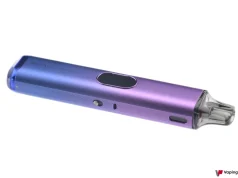In 2022 the Smokefree Environments and Regulated Products (Smoked Tobacco) Amendment Bill which regulates vaping products, was passed to the Health Select Committee for submissions and review, and subsequently returned to the House in late 2022 to be passed into law. The bill is aim is part of the Tobacco Endgame which aims to reduce the local smoking rates beneath 5% of the adult population within years.
Former PM acknowledged the effectivity of vapes as safer alternatives
Discussing aspects of the bill, last year former Prime Minister Jacinda Ardern acknowledged that vapes are helping people quit smoking. “We know that vaping is making a difference” said the progressive PM.
She added that raising tobacco prices was not encouraging people to quit smoking, but the use of safer alternatives is. “And if they are smoking, they have to find safe alternatives and ways for them to quit. And that’s what this is all about,” she said. “And that actually enables us to push ahead with further activity route to reduce down smoking because there is an alternative that works very successfully for people in order to stop smoking. We know that vaping is making a difference for those now in order to stop smoking. And so it is an important tool.”
A recent study, “Effects of vaping on uptake and cessation of smoking: Longitudinal analysis in Aotearoa New Zealand adults,” collected data from adults living in New Zealand between 2018–2020. The results indicated once again that while vaping is increasing smoking is decreasing. The study authors specified that no differences were observed in the likelihood of transitioning from smoking to vaping or from vaping to smoking. This led to the conclusion that while vaping may have a gateway effect to smoking, it may also have a smoking cessation effect.
The fearmongering anti-vape propaganda continues
Despite all these positive data, the anti-vaping propaganda continues even in New Zealand. Following a recent surge of anti-vaping media coverage, the Executive Coordinator of the Coalition of Asia Pacific Tobacco Harm Reduction Advocates (CAPHRA) Nancy Loucas, said that the nation is at risk of not achieving its Smokefree 2025 goal if vaping keeps being demonized.
“New Zealand is at risk of not achieving its decade long Smokefree 2025 ambition if commentators continue to demonise the most effective quit-smoking tool we have right now,” said Loucas. Some of the media headlines she is referring to have compared vaping to smoking, rather than portraying it as a safer alternative.
She added that while New Zealand is aiming to be Smokefree by 2025, a misinformed minority are possibly sabotaging this goal by villainizing vapes. Loucas explained that there seems to be renewed alarm about youth vaping. “That’s despite nicotine killing no one and combustible tobacco killing 5,000 Kiwis every year.” Of course no one wants secondary school students vaping, however she explained, the latest survey has indicated that any student vapers are overwhelmingly those who were smoking first.
Consumers must be part of the THR debate
Meanwhile, as New Zealand’s election is approaching in October 2023, Loucas recently highlighted that it’s crucial to address the importance of consumer advocacy in the tobacco harm reduction (THR) debate. THR is becoming more widely accepted and advocated for by public health experts advocating for safer alternative to conventional cigarettes. However, consumers are still being excluded from the debate.
This is particularly the case on the global stage, of which a clear example is the upcoming WHO Framework Convention on Tobacco Control Conference of Parties 10 being held in Panama this November. Being a delegate, New Zealand presents the perfect opportunity for the next local Government to be a leader in supporting consumer participation.
Loucas explains that excluding adult consumers from the THR debate could have severe consequences given they play a vital role in promoting harm reduction strategies and have first-hand experience with the products. The consumers’ feedback is essential and can significantly improve the safety and efficacy of harm reduction products.
“In New Zealand, THR consumer advocates have actively engaged in the debate, and proactively contributed to the development of effective strategies and our current regulatory scheme. It’s essential that these advocates participate in global discussions to represent the needs and perspectives of consumers on the international stage,” she concluded.








